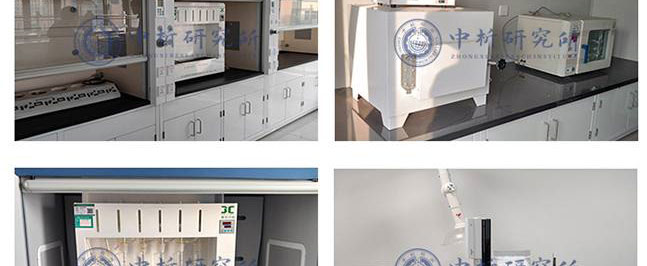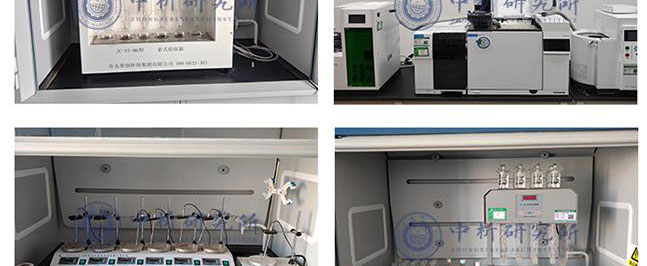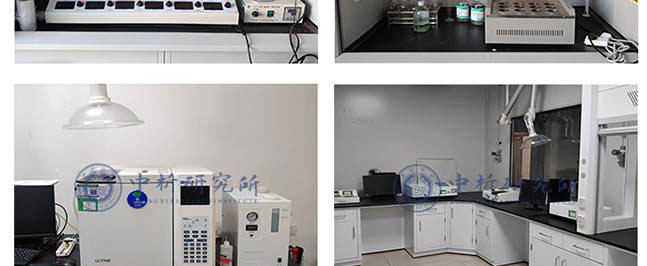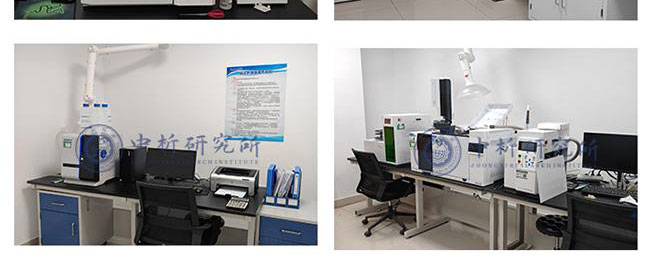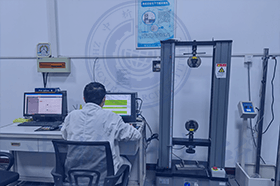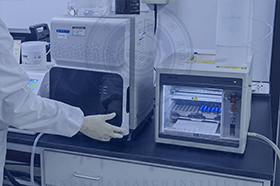國家標準 GB/T 221-2008 鋼鐵產(chǎn)品牌號表示方法
【適用范圍】本標準規(guī)定了鋼鐵產(chǎn)品牌號表示方法。rn本標準適用于編寫生鐵、碳素結(jié)構(gòu)鋼、低合金結(jié)構(gòu)鋼、優(yōu)質(zhì)碳素結(jié)構(gòu)鋼、易切削鋼、合金結(jié)構(gòu)鋼、彈簧鋼、工具鋼、軸承鋼、不銹鋼、耐熱鋼、焊接用鋼、冷軋電工鋼、電磁純鐵、原料純鐵、高電阻電熱合金及有關(guān)專用鋼等產(chǎn)品牌號。rn本標準中未規(guī)定的鋼鐵產(chǎn)品牌號表示方法,應(yīng)按本標準規(guī)定的原則編寫牌號。rn粉末冶金材料、鑄鐵(件)、鑄鋼(件)、鐵合金、高溫合金和金屬間化合物高溫材料、耐蝕合金、精密合金等產(chǎn)品的牌號表示方法應(yīng)分別符合下列國家標準規(guī)定。rnGB/T 4309 粉末冶金材料分類和牌號
【中國標準分類】 H40 鋼鐵產(chǎn)品
【國際標準分類】 77.140.01-鋼鐵產(chǎn)品綜合
國家標準 GB/T 221-2000 鋼鐵產(chǎn)品牌號表示方法
【適用范圍】
【中國標準分類】 H40 鋼鐵產(chǎn)品
【國際標準分類】 77.140.01-鋼鐵產(chǎn)品綜合
國家標準 GB/T 221-1979 鋼鐵產(chǎn)品鍍鋅層質(zhì)量試驗方法
【適用范圍】
【中國標準分類】 Z00 金屬理化性能實驗方法
【國際標準分類】 13.020.10-環(huán)境管理
地方標準 CNS 13406-1994 鋼鐵產(chǎn)品之渦電流外繞線圈檢測法
【適用范圍】本標準適用于外繞式線圈(以下稱之為檢測線圈)之渦電流檢測法用以檢測圓棒鋼(包含線材和直徑 2mm ~ 100mm 者)和鋼管(外徑 4mm ~ 180mm)(以下稱之為檢測工作)之表面裂縫和其它類瑕疵。
【中國標準分類】 K04 電工綜合
【國際標準分類】 19.080-電工和電子試驗
國際標準 ISO 11484-2019 鋼鐵產(chǎn)品--無損檢測人員的雇主資格制度
【適用范圍】This document specifies an employer’s qualification system for non-destructive testing (NDT)
personnel performing the testing of the following steel products under the employer’s responsibility:
a) tubes/pipes (seamless or welded);
b) flat products
long products
rails
bars
sections
rods and wires.
This document specifies qualification requirements for the competence of Level 1 and Level 2 NDT
personnel to execute specific tasks in the NDT of steel products. The qualification is issued by the
employer for a specific steel product and a specific test method.
This document is applicable to NDT personnel performing predominantly the automated testing of steel
products
using any of the following NDT methods:
a) eddy current testing (ET);
b) leak testing (LT);
c) liquid penetrant testing (PT);
d) magnetic testing (MT);
e) radiographic testing (RT);
f) ultrasonic testing (UT);
g) visual testing (VT).對了
【中國標準分類】 A29 經(jīng)濟、文化
【國際標準分類】 25.220.10-表面預處理
國外標準 ASTM D6386-2010 涂漆用鍍鋅(熱浸鍍鋅)鋼鐵產(chǎn)品及金屬構(gòu)件表面的制備規(guī)程
【適用范圍】
This practice describes the procedures that can be used to prepare new and weathered zinc-coated surfaces on after-fabrication steel products for painting
and that can improve the bond of paint to the zinc surface.
1.1 This practice describes methods of preparing surfaces of new and weathered hot-dip galvanized steel for painting. Hot-dip galvanized steel is produced by the immersion of fabricated or unfabricated products in a bath of molten zinc
as specified in Specifications A123/A123M or A153/A153M. This practice covers surface preparation on iron and steel products and hardware that have not been painted previously. Galvanized surfaces may have been treated with protective coatings to prevent the occurrence of wet storage stain. This practice does not apply to sheet galvanized steel products nor to the coil coating or continuous roller coating processes. Sheet and coil surface preparation can be done in accordance with Practice D7396.
1.2 The values stated in SI units are to be regarded as the standard. The values given in parentheses are for information only.
1.3 This standard does not purport to address all of the safety concerns
if any
associated with its use. It is the responsibility of the user of this standard to establish appropriate safety and health practices and to determine the application of regulatory limitations prior to use.
【中國標準分類】 A29 基礎(chǔ)標準
【國際標準分類】 25.220.10-表面預處理
國外標準 ASTM B37-2017 鋼鐵產(chǎn)品用鋁的規(guī)格
【適用范圍】1.1 This specification covers aluminum-alloy deoxidizing products of all compositions in the form of ingots
bars
rods
cones
nuggets
shot
or stars
for use in the manufacture of iron and steel. Six of the most commonly used deoxidizing product compositions are designated as shown in Table 1. (A) Analysis shall be made only for copper
zinc
magnesium
silicon
and iron unless the determination of additional elements is required by the contract or order
or the presence of other elements in substantial concentration is indicated during the course of the analysis. In the latter case
the amount of these other elements shall be determined
reported
and the total of copper
zinc
magnesium
silicon
iron
and “other elements” shall not exceed the specified amount prescribed in the last column of the table. Unless otherwise specified in the contract or order
0.2 % or more of any “other element” shall constitute a “substantial concentration” and require that element to be reported.(B) The following applies to all specified limits in this table: For purposes of determining conformance to these limits
an observed value or a calculated value obtained from analysis shall be rounded to the nearest unit in the last right-hand place of figures used in expressing the specified limit in accordance with the rounding-off method of Practice E29. 1.2 Units—The values stated in inch-pound units are to be regarded as standard. The values given in parentheses are mathematical conversions to SI units that are provided for information only and are not considered standard. 1.3 This standard does not purport to address all of the safety concerns
if any
associated with its use. It is the responsibility of the user of this standard to establish appropriate safety
health
and environmental practices and determine the applicability of regulatory limitations prior to use. 1.4 This inter
【中國標準分類】 H61 有色金屬及其合金產(chǎn)品
【國際標準分類】 77.120.10-鋁和鋁合金
國外標準 ASTM D6386-2016 涂漆用鍍鋅(熱浸鍍鋅)鋼鐵產(chǎn)品及金屬構(gòu)件表面的制備規(guī)程
【適用范圍】1.1 This practice describes methods of preparing surfaces of new and weathered hot-dip galvanized steel for painting. Hot-dip galvanized steel is produced by the immersion of fabricated or unfabricated products in a bath of molten zinc
as specified in Specifications A123/A123M or A153/A153M. This practice covers surface preparation on iron and steel products and hardware that have not been painted previously. Galvanized surfaces may have been treated with protective coatings to prevent the occurrence of wet storage stain. This practice does not apply to sheet galvanized steel products nor to the coil coating or continuous roller coating processes. Sheet and coil surface preparation can be done in accordance with Practice D7396. 1.2 The values stated in SI units are to be regarded as the standard. The values given in parentheses are for information only. 1.3 This standard does not purport to address all of the safety concerns
if any
associated with its use. It is the responsibility of the user of this standard to establish appropriate safety and health practices and to determine the application of regulatory limitations prior to use.
【中國標準分類】 A29 基礎(chǔ)標準
【國際標準分類】 25.220.10-表面預處理
國外標準 ASTM A1072/A1072M-2011 鋼鐵產(chǎn)品防腐系統(tǒng)壽命周期成本分析規(guī)程
【適用范圍】
LCC analysis is an economic method for evaluating alternatives that are characterized by differing cash flows over the designated project design life. The method entails calculating the LCC of each alternate capable of satisfying the functional requirement of the project and comparing them to determine which has (have) the lowest estimated LCC over the project design life.
The LCC method is particularly suitable for determining whether the higher initial cost of an alternative is economically justified by reductions in future costs (for example
rehabilitation
or replacement) when compared to an alternative with lower initial costs but higher future costs. If a design alternative has both a lower initial cost and lower future costs than other alternatives
an LCC analysis is not necessary to show that the former is the economically preferable choice.
1.1 This practice covers a procedure for using life-cycle cost (LCC) analysis techniques to evaluate alternative corrosion protection system designs that satisfy the same functional requirements.
1.2 The LCC technique measures the present value of all relevant costs of producing and rehabilitating alternative corrosion protection systems
such as surface preparation
application
construction
rehabilitation
or replacement
over a specified period of time.
1.3 Using the results of the LCC analysis
the decision maker can then identify the alternative(s) with the lowest estimated total cost based on the present value of all costs.
1.4 This standard does not purport to address all of the safety concerns
if any
associated with its use. It is the responsibility of the user of this standard to establish appropriate safety and health practices and determine the applicability of regulatory limitations prior to use.
【中國標準分類】 H02 冶金綜合
【國際標準分類】 77.020-金屬生產(chǎn)
國外標準 ASTM A1068-2010(2015) 鋼鐵產(chǎn)品防腐系統(tǒng)壽命周期成本分析規(guī)程
【適用范圍】1.1 This practice covers a procedure for using life-cycle cost (LCC) analysis techniques to evaluate alternative corrosion protection system designs that satisfy the same functional requirements. 1.2 The LCC technique measures the present value of all relevant costs of producing and rehabilitating alternative corrosion protection systems
such as surface preparation
application
construction
rehabilitation
or replacement
over a specified period of time. 1.3 Using the results of the LCC analysis
the decision maker can then identify the alternative(s) with the lowest estimated total cost based on the present value of all costs. 1.4 This standard does not purport to address all of the safety concerns
if any
associated with its use. It is the responsibility of the user of this standard to establish appropriate safety and health practices and determine the applicability of regulatory limitations prior to use.
【中國標準分類】 H02 冶金綜合
【國際標準分類】 77.060-金屬的腐蝕
國外標準 ASTM A1072/A1072M-2011(2015) 鋼鐵產(chǎn)品上鋅-5%鋁(熱浸)鍍層規(guī)格
【適用范圍】1.1 This specification covers the requirements for zinc-5 % aluminum coated
by the hot-dip process on iron and steel products. The coating may also contain small amounts of elements other than zinc and aluminum that are intended to improve processing and the characteristics of the coated product. These metallic coatings include zinc- 5 %-aluminum (Zn-5Al)
zinc-5 %-aluminum-mischmetal (Zn-5Al-MM) and zinc-5 %-aluminum-magnesium (Zn- %Al-Mg). 1.2 This specification covers both un-fabricated products and fabricated products
for example
assembled steel products
structural steel fabrications
large tubes already bent or welded before hot-dip coating
and wire work fabricated from uncoated steel wire. This specification
also
covers steel forgings and iron castings incorporated into pieces fabricated
before hot-dip coating or which are too large to be centrifuged (or otherwise handled to remove excess molten bath metal). 1.3 Fabricated reinforcing steel bar assemblies are covered by the present specification. 1.4 This specification is applicable to orders in either inch-pound units (as A1072) or SI units (as A1072M). Inch-pound units and SI units are not necessarily exact equivalents. Within the text of this specification and where appropriate
SI units are shown in parentheses. Each system shall be used independently of the other without combining values in any way. In the case of orders in SI units
all testing and inspection shall be done using the metric equivalent of the test or inspection method as appropriate. In the case of orders in SI units
such shall be stated to the hot-dip coater when the order is placed.
【中國標準分類】 A29 基礎(chǔ)標準
【國際標準分類】 25.220.40-金屬鍍層
國外標準 BS PD CEN/TR 10317-2009 歐洲鋼鐵標準化委員會支持下制備的鋼鐵產(chǎn)品化學成分測定用歐洲認定標準物質(zhì)
【適用范圍】This document describes the classification
the method of sample preparation for each material
thencertification main rules and certificate content of the EURONORM-CRMs.nIt also lists the samples' presentation
the corresponding producer's organizations and the distributingnsources.
【中國標準分類】 H40 金屬化學分析方法
【國際標準分類】 77.080.20-鋼
國外標準 JIS G0431-2009 鋼鐵產(chǎn)品的非破壞試驗技術(shù)人員的資格及認證
【適用范圍】This Japanese Industrial Standard has been prepared based on ISO/FDIS 11484.2 published in 2008 with some modifications of the technical contents.
【中國標準分類】 A83;A29 鋼鐵產(chǎn)品
【國際標準分類】 77.080.01-黑色金屬綜合
國外標準 DIN EN 10229-1998 鋼鐵產(chǎn)品耐氫腐蝕的評定
【適用范圍】The document describes a method for evaluation of resistance of steel products to hydrogen induced cracking.
【中國標準分類】 H25 金屬理化性能實驗方法
【國際標準分類】 77.060-金屬的腐蝕
國外標準 CEN/TR 10317-2014 無損檢測 超聲檢測 測量接觸探頭聲束特性的參考試塊和方法
【適用范圍】本標準規(guī)定了探頭與被檢工件接觸時工件內(nèi)聲場聲束特性的測量方法。探頭包括直探頭、斜探頭
(折射縱波和折射橫波)、聚焦探頭和雙晶探頭。本標準推薦了兩種金屬參考試塊,分別為半圓階梯試塊(HS試塊)和橫孔試塊(SDH試塊)。探頭晶片直徑或邊長不大于25mm。
本標準規(guī)定了適于檢測鍛鋼、軋制鋼、鋁合金或鈦合金產(chǎn)品的探頭聲束特性的測量導則。本標準適用的探頭頻率范圍為1MHz~15MHz。1MHz~5MHz是最宜于鋼鐵產(chǎn)品檢測的頻率范圍,5MHz~15MHz是最適宜于細晶結(jié)構(gòu)產(chǎn)品(如鋁合金產(chǎn)品)檢測的頻率范圍。
如果本標準應(yīng)用于鋼鐵產(chǎn)品以外的檢測,檢測人員宜注意該材質(zhì)的聲速與鋼的聲速不同,同時斜探頭標稱折射角通常按在鋼中檢測設(shè)計。本標準給出了斯涅爾定律,以便檢測人員計算其他各向同性和細晶材料內(nèi)折射角。本標準適用于實際折射角范圍在0°~70°內(nèi)的斜探頭、聚焦探頭和雙晶探頭。本標準不適用于表面波(瑞利)探頭。
本標準不涉及用平底孔試塊評價缺欠當量尺寸的內(nèi)容。本標準不規(guī)定驗收條款,但為檢測人員制定探頭性能的驗收條款建立技術(shù)基礎(chǔ)。
【中國標準分類】 J04 機械綜合
【國際標準分類】 19.100-無損檢測
國家標準 GB/T 18852-2002 無損檢測 超聲檢驗 測量接觸探頭聲束特性的參考試塊和方法
【適用范圍】 本標準推薦兩種金屬參考試塊,半圓階梯試塊(HS試塊)和橫孔試塊(SDH試塊)。本標準為接觸探傷中使用的探頭在固體內(nèi)產(chǎn)生的聲場提供了測定方法。測定的探頭包括直探頭、斜探頭(折射縱波和折射橫波),聚焦探頭和雙晶探頭。探頭的直徑或邊長不大于25mm,本標準適用于檢測鍛鋼或軋制鋼、鋁合金或鈦合金產(chǎn)品的探頭測定。本標準適用的探頭頻率范圍為1MHz至15MHz。1MHz至5MHz最適宜于對鋼鐵產(chǎn)品的檢測,5MHz至15MHz最適宜于對象鋁合金之類的細晶粒結(jié)構(gòu)產(chǎn)品的檢測。如將本標準用于鋼以外的產(chǎn)品檢測,用戶須知,其產(chǎn)品內(nèi)的聲速與鋼中聲速不同,而斜探頭通常是按應(yīng)用于鋼來設(shè)計的。本標準給出的Snell定律是讓用戶計算其他材料內(nèi)準確折射角用的。本標準適用于所有實用折射角范圍(0°~70°)。也適用于聚焦探頭和雙晶探頭。本標準不適用于表面波探頭。rn 本標準給出的方法可以被整體采納,也可以在同其他標準合用時部分采納。當檢測更厚或更薄的材料時也可以將本標準推薦試塊(HS和SDH試塊)相應(yīng)增大或減小。本標準沒有考慮對需要使用平底孔試塊來測定的缺陷當量尺寸作出檢測。本標準沒有驗收標準,當然,本標準已為用戶制定驗收標準奠定了技術(shù)基礎(chǔ)。
【中國標準分類】 J04 機械綜合
【國際標準分類】 19.100-無損檢測
國家標準 GB/T 32151.5-2015 溫室氣體排放核算與報告要求 第5部分:鋼鐵生產(chǎn)企業(yè)
【適用范圍】GB/T32151的本部分規(guī)定了鋼鐵生產(chǎn)企業(yè)溫室氣體排放量的核算和報告相關(guān)的術(shù)語、核算邊界、核算步驟與核算方法、數(shù)據(jù)質(zhì)量管理、報告內(nèi)容和格式等內(nèi)容。 n本部分適用于鋼鐵生產(chǎn)企業(yè)溫室氣體排放量的核算和報告
鋼鐵生產(chǎn)企業(yè)可按照本部分提供的方法核算溫室氣體排放量
并編制企業(yè)溫室氣體排放報告。如鋼鐵生產(chǎn)企業(yè)除鋼鐵產(chǎn)品生產(chǎn)以外還存在其他產(chǎn)品生產(chǎn)活動且存在溫室氣體排放
則應(yīng)按照相關(guān)行業(yè)的企業(yè)溫室氣體排放核算和報告要求進行核算并匯總報告。
【中國標準分類】 Z04 環(huán)境保護綜合
【國際標準分類】 13.020.10-環(huán)境管理
行業(yè)標準 JB/T 5000.12-2007 重型機械通用技術(shù)條件 第12部分:涂裝
【適用范圍】JB/T 5000的本部分規(guī)定了重型機械產(chǎn)品及其零部件的涂裝技術(shù)要求及檢測要求。n本部分主要適用于鋼鐵產(chǎn)品的表面涂裝。凡合同文件無特殊要求的,其產(chǎn)品表面的涂裝均應(yīng)符合本部分的規(guī)定。
【中國標準分類】 H08 基礎(chǔ)標準
【國際標準分類】 03.080.10-工業(yè)服務(wù)
行業(yè)標準 WB/T 1092-2018 鋼鐵物流包裝、標識規(guī)范
【適用范圍】本標準規(guī)定了鋼鐵產(chǎn)品在物流過程中的包裝和標識要求。
本標準適用于鋼鐵產(chǎn)品在物流過程中的包裝、標識的作業(yè)及管理。
【中國標準分類】 H08 冶金綜合
【國際標準分類】 03.080.10-工業(yè)服務(wù)
行業(yè)標準 WB/T 1093-2018 化學試藥(氯化金)
【適用范圍】本標準適用于為改善鋼鐵產(chǎn)品(1)之耐候性、耐蝕性及耐熱性,在其有效面(2)上施以熱浸法(3)鍍鋁。注(1) 不適用于連續(xù)式鍍鋁鋼片、鍍鋁鋼線、不銹鋼及耐熱鋼。(2) 有效面即為使用上重要之表面或依 CNS 7796 [電鍍工程圖表示法] 第 4 節(jié)之規(guī)定。(3) 使用 CNS 8 [初生鋁錠] 五號鋁
【中國標準分類】 G62 化學試劑
【國際標準分類】 71.040.30-化學試劑
地方標準 CNS 1741-2000 鋼鐵表面熔鋅之噴敷層
【適用范圍】本標準適用于為改善鋼鐵產(chǎn)品之耐候性、耐蝕性,耐熱性,在其表面施以熱浸法鍍鋁之作業(yè)。但不適用于連續(xù)式鍍鋁鋼片、鍍鋁鋼線。
【中國標準分類】 A29 基礎(chǔ)標準
【國際標準分類】 25.220.20-表面處理
地方標準 CNS 8294-1982 鋼鐵之鋁噴敷作業(yè)方法
【適用范圍】本標準規(guī)定防止鋼鐵產(chǎn)品銹蝕及高溫氧化在其表面采用瓦斯熔鋁線噴敷作業(yè)。對于其它方法亦準適用。
【中國標準分類】 A29 基礎(chǔ)標準
【國際標準分類】 25.220.20-表面處理
地方標準 CNS 8296-1995 鋼鐵之熱浸法鍍鋁檢驗法
【適用范圍】本標準規(guī)定鋼鐵產(chǎn)品熱浸法鍍鋁之檢驗法。但不適用于連續(xù)式鍍鋁鋼片。
【中國標準分類】 A29 基礎(chǔ)標準
【國際標準分類】 77.140.01-鋼鐵產(chǎn)品綜合
地方標準 CNS 8503-2015 熱浸鍍鋅作業(yè)方法
【適用范圍】本標準適用于鋼鐵產(chǎn)品為防蝕而在其表面施以熱浸鍍鋅之作業(yè)。但不適用連續(xù)式鍍鋅鋼片及鍍鋅鋼線。
【中國標準分類】 A29 基礎(chǔ)標準
【國際標準分類】 25.220.01-表面處理和涂覆綜合
地方標準 CNS 8503-1995 熱浸法鍍鋅作業(yè)方法
【適用范圍】本標準規(guī)定鋼鐵產(chǎn)品為防銹蝕而在表面施以熱浸法鍍鋅之作業(yè)。但不適用于連續(xù)式鍍鋅鋼片、鍍鋅鋼線。
【中國標準分類】 A29 基礎(chǔ)標準
【國際標準分類】 25.220.01-表面處理和涂覆綜合
地方標準 CNS 10007-1995 鋼鐵之熱浸法鍍鋅
【適用范圍】本標準適用于改善鋼鐵產(chǎn)品(1)之而蝕性,在其有效面(2)上施以熱浸法鍍鋅。注(1)不適用于連續(xù)式鍍鋅鋼片、鍍鋅鋼線。(2)有效面即使用上重要之表面或依 CNS 7796 〔電鍍工程圖表示法〕第 4 節(jié)之規(guī)定。
【中國標準分類】 A29 基礎(chǔ)標準
【國際標準分類】 77.140.01-鋼鐵產(chǎn)品綜合
地方標準 DB13/T 1484-2011 無縫鋼管與焊接鋼管鑒別 金相法
【適用范圍】本標準規(guī)定了無縫鋼管與焊接鋼管的金相鑒別方法。
本標準適用于碳鋼、合金鋼、不銹鋼等無縫鋼管與焊接鋼管的金相鑒別,其它鋼鐵產(chǎn)品(包括軋材、鍛件、鑄件等)是否經(jīng)過焊接可參照此標準。
【中國標準分類】 H11 金屬化學分析方法
【國際標準分類】 77.140.01-鋼鐵產(chǎn)品綜合
國外標準 NF A02-025-2000 鋼鐵產(chǎn)品。鋼種的確定和分類。
【適用范圍】
【中國標準分類】 H40 鋼鐵產(chǎn)品
【國際標準分類】 77.080.20-鋼
國外標準 NF A03-116-2004 鋼鐵產(chǎn)品。厚度大于0.5mm 和小于3mm 的鋼板與鋼帶的單向彎曲試驗。
【適用范圍】
【中國標準分類】 H22 金屬理化性能實驗方法
【國際標準分類】 77.040.10-金屬材料力學試驗
國外標準 NF A03-158-1965 鋼鐵產(chǎn)品。厚度大于0.5mm 和小于3mm 的鋼板與鋼帶的單向彎曲試驗。
【適用范圍】
【中國標準分類】 H22 金屬理化性能實驗方法
【國際標準分類】 77.040.10-金屬材料力學試驗
國外標準 NF A03-174-1985 鋼鐵產(chǎn)品。伸長值的換算。第一部分:含碳鋼與弱合金鋼。
【適用范圍】
【中國標準分類】 H22 金屬理化性能實驗方法
【國際標準分類】 77.040.10-金屬材料力學試驗
2、可以為生產(chǎn)商提供科學的數(shù)據(jù),證明其產(chǎn)品符合國際、國家和地區(qū)相關(guān)標準和規(guī)定,從而增強產(chǎn)品的市場競爭力。
4、雙方將就檢測項目進行詳細溝通,并簽署保密協(xié)議,以保證客戶信息的保密性。在此基礎(chǔ)上,我們將進行測試試驗.
















